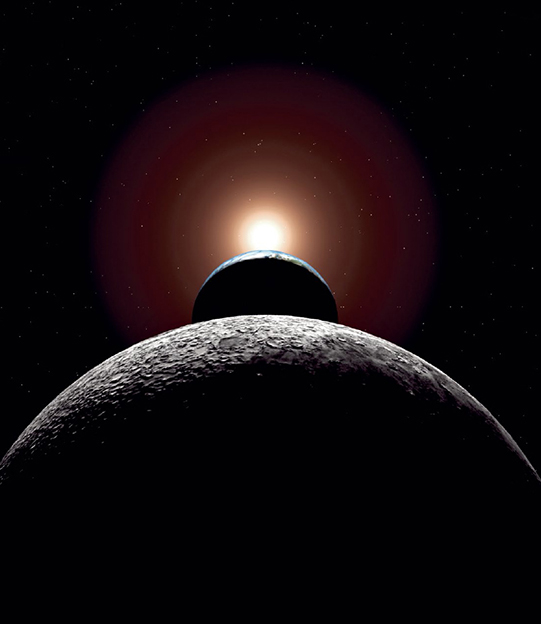1686
Tides
Isaac Newton (1643–1727)
Coastal communities and seafaring civilizations have been tuned in to the twice-daily rise and fall of the sea—the tides—throughout human history. Babylonian and Greek astronomers recognized the relationship of the height of the tides with the position of the Moon in its orbit, and thought they were connected through the same almost-spiritual forces that governed the motions of the planets. Early Arabic astronomers thought the tides were mediated by sea-temperature changes. Seeking support for a Sun-centered view of the cosmos, Galileo proposed that the tides come from the sloshing of the oceans during the Earth’s motion around the Sun.
The first person to propose the correct origin of the tides—linking the Earth, Moon, and Sun—was the English mathematician, physicist, and astronomer Isaac Newton. Among other things, Newton had been working on a generalized theory to explain Kepler’s Laws of Planetary Motion, and by 1686 he had developed the basic outline for new theories of universal gravitation and general laws of motion. Newton hypothesized that both the Moon and the Sun exert a strong gravitational attraction to the Earth (and vice versa). His breakthrough discovery, since verified and enhanced by space-age observations, was that gravitational forces alone (not the Earth’s spin or orbital motion), acting on the Earth’s thin fluid ocean “shell,” are almost entirely responsible for the tides.
The Moon’s gravitational attraction raises a deep-water ocean tide of about 20 inches (50 centimeters); the Sun’s tidal effect is about half that. Tidal heights can be up to ten times larger in shallow water, and the tides at any particular coastal location are a strong function of the positions of the Sun and Moon, as well as of the loc al seafloor depth and coastline shape. The solid parts of the Earth and Moon bulge in response to gravitational tidal attraction as well, with an amplitude typically about half that of the oceanic tides. Solid and liquid deformation dissipate energy in the Earth–Moon system through what is called tidal friction. As a result, the Earth’s spin is slowing down by a few milliseconds per century, and the Moon is slowly receding from the Earth by about 13 feet (4 meters) per century.
SEE ALSO Laws of Planetary Motion (1619), Gravity (1687), Earth’s Spin Slows Over Time (1999)
The Moon, Earth, and Sun are all connected gravitationally, a link made by Sir Isaac Newton. Each exerts strong gravitational attractive forces on the others in proportion to their masses and inversely proportional to the square of their distances. The fluid nature of Earth’s oceans allows these forces to be expressed as tides.
